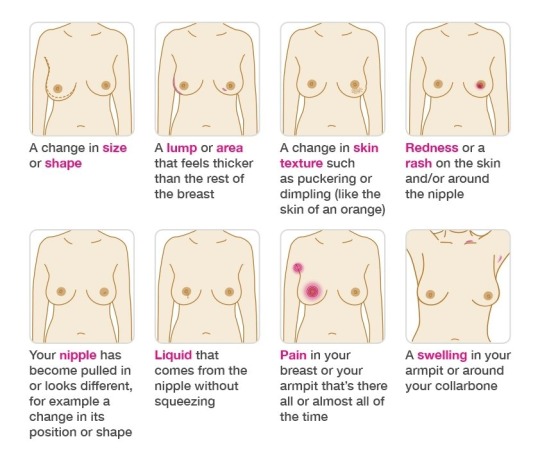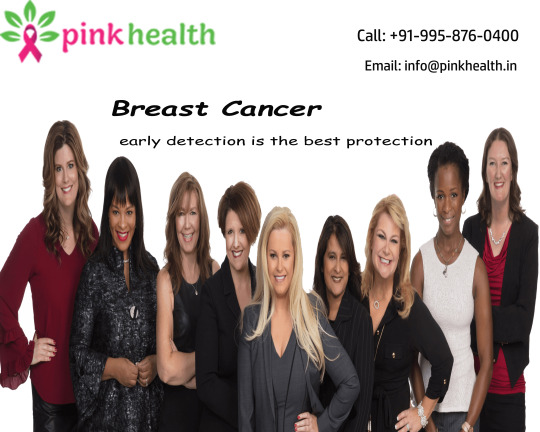Photo

I am an #oncologist, #Mammography #Test, and #Oncologist #Doctor currently living in Delhi, India. My interests range from health to the Doctor. I am also interested in an oncologist, Mammography, and Breast Cancer.
#Breast Cancer Doctor in Delhi#Mammography Test in Delhi#Best oncologist in Delh#Breast Cancer#Best oncologist doctor in Delhi#oncologist near me#cancer hospital#cancer hospital in delhi#best cancer hospital in delhi#cancer specialist#best oncologist in india#doctors in india#oncologist doctor
0 notes
Link

#Oncologist Doctor#Breast Cancer Doctor in Delhi#Mammography Test in Delhi#Best oncologist in Delhi#Breast Cancer#Best oncologist doctor in Delhi#oncologist near me#cancer hospital in delhi#best cancer hospital in delhi
0 notes
Text
What are the signs and symptoms of breast cancer?
What are the signs and symptoms of breast cancer?
Some of the signs and symptoms of breast cancer include:
a change in size or shape
a lump or area that feels thicker than the rest of the breast
a change in skin texture such as puckering or dimpling (like the skin of an orange)
redness or rash on the skin and/or around the nipple
your nipple has become pulled in or looks different, for example, changed its position or shape
a liquid that comes…
View On WordPress
#about breast cancer#benign breast disease#benign breast lump#benign breast tumor#best cancer hospital in delhi#Best oncologist in Delhi#best oncologist in india#breast#breast cancer#breast cancer awareness#breast cancer diagnosis#breast cancer information#breast cancer lumps#breast cancer symptoms#breast cancer tumor#breast carcinoma#breast care#breast health#breast pain#breast pain and lumponcologist near me#breast tumor#breast tumor types#cancer hospital#cancer hospital in delhi#cancer specialist#doctors in india#early breast cancer#etiology of breast cancer#lump in breast#male breast lump
0 notes
Link
Best Oncologist: Pink Health One of the best oncologists in India. He has medical oncologists experiencing his expertise in the treatment of cases of lymphoma and multiple myeloma, lung cancer, breast cancer, acute cancer, making him one of the top renowned best cancer surgeons in Delhi-NCR, India.
#breast cancer#Best oncologist in Delhi#Mammography Test in Delhi#Breast Cancer Doctor in Delhi#Best Oncologist Doctor in Delhi#Oncologist in Delhi
0 notes
Photo

What is Breast Cancer And Symptoms
Breast cancer is a cancer that develops from breast tissue. Signs of breast cancer may include a lump in the breast, a change in breast size, blurring of the skin, fluid coming from the nipple, a newly inverted nipple, or a red or sinuous patch of skin.
Cancer that is made in the cells of the breast.
Breast cancer can occur in women and rarely in men.
Symptoms of breast cancer include a lump in the breast, bloody discharge from the nipple and changes in the shape or texture of the nipple or breast.
Its treatment depends on the stage of cancer. This may include chemotherapy, radiation, hormone therapy, and surgery
.
Symptoms
Requires a medical diagnosis
Symptoms of breast cancer include a lump in the breast, bloody discharge from the nipple and changes in the shape or texture of the nipple or breast.
There may not be any symptoms, but people may experience:
Breast: discomfort, inverted nipple, lump, or nipple discharge
Also common: redness, swollen lymph nodes, or thickening or ripening of skin.
Treatment depends on the stage
Its treatment depends on the stage of cancer. This may include chemotherapy, radiation, hormone therapy, and surgery.
Surgery
mammaplasty
Plastic surgery to increase or decrease the size of the breasts or to rebuild the breast.
Tissue expansion
Inserting a balloon under the skin and then slowly expanding it to develop the skin and surrounding tissue.
Lymph Node Dissection
Surgical removal of the lymph node.
Lumpectomy
Surgical removal of a lump (tumor) in the breast.
Breast
Surgical removal of some or all of the breast.
Medical procedure
Teletherapy
Radiation therapy uses X-rays or other high-energy beams to destroy cancer cells and shrink tumors.
Radiation Therapy
Treatment that uses X-rays and other high-energy rays to kill abnormal cells.
Medications
Estrogen modulator
Mimics the effects of estrogen on various tissues, including the breast, bones, and reproductive organs.
Chemotherapy
Kills cells that are growing or growing very rapidly.
Hormone Based Chemotherapy
Treats hormone-sensitive cancers.
Bone Health
It helps to strengthen and build bones.
Oncologist
Specialist in Cancer.
Palliative medicine
It focuses on improving the quality of life for people with critical illnesses.
Radiation oncologist
Treats and manages cancer by prescribing radiation therapy.
Primary Care Provider (PCP)
Prevents, diagnoses and treats diseases.
Plastic surgeon
Reconstructs defective, damaged or missing body parts.
Surgeon
Operates to treat disease.
Consult a doctor for medical advice.
breast cancer symptoms
#breast cancer symptoms#breast cancer#breast pain#lump in breast#breast cancer awareness#breast tumor#types of breast cancer#painful lump in breast#breast care#oncologist near me#cancer hospital#cancer hospital in delhi#best cancer hospital in delhi#cancer specialist#best oncologist in india#doctors in india#oncologist doctor#best oncologist in delhi#oncologist in delhi#surgical oncologist
0 notes
Text
Breast Cancer And Symptoms
Breast Cancer And Symptoms
Breast cancer is a cancer that develops from breast tissue. Signs of breast cancer may include a lump in the breast, a change in breast size, blurring of the skin, fluid coming from the nipple, a newly inverted nipple, or a red or sinuous patch of skin.

Breast Cancer
Cancer that is made in the cells of the breast.
Breast cancer can occur in women and rarely in men.
Symptoms of…
View On WordPress
#best cancer hospital in delhi#Best oncologist in Delhi#best oncologist in india#breast cancer#breast cancer awareness#breast cancer symptoms#breast pain#breast tumor#cancer hospital#cancer hospital in delhi#cancer specialist#doctors in india#lump in breast#oncologist doctor#oncologist in delhi#oncologist near me#surgical oncologist
0 notes
Link

#oncologist near me#cancer hospital#cancer hospital in delhi#best cancer hospital in delhi#cancer specialist#best oncologist in india#doctors in india#oncologist doctor#best oncologist in delhi#oncologist in delhi
0 notes
Photo

Let's make this #Diwali joyous and bright,
Let's celebrate in true sense this festival of light.
#Dhanteras & #Happy #Deepawali 2019.
#Breast Cancer Doctor in Delhi#Mammography Test in Delhi#Best oncologist in Delhi#Breast Cancer#oncologist doctor in Delhi
0 notes
Text
Pink Health - Happy Dhanteras & Happy Diwali 2019
Pink Health – Happy Dhanteras & Happy Diwali 2019
Let’s make this #Diwali joyous and bright,
Let’s celebrate in true sense this festival of light.
#Dhanteras & #Happy #Deepawali 2019.
View On WordPress
#about breast cancer#benign breast disease#benign breast lump#benign breast tumor#breast#breast cancer#breast cancer awareness#breast cancer diagnosis#breast cancer information#breast cancer lumps#breast cancer symptoms#breast cancer tumor#breast carcinoma#breast care#breast health#breast pain#breast tumor#breast tumor types#early breast cancer#etiology of breast cancer#lump in breast#male breast lump#painful lump in breast#painful lump in breast female#the breast#types of breast cancer#types of breast lumps
0 notes
Link
Best Oncologist Doctor In Delhi

#Best oncologist in Delhi#Breast Cancer#Cancer Symptoms#Breast Cancer Causes#Best Oncologist Doctor In Delhi#Oncologist in Delhi#Mammography Test in Delhi#Symptoms and causes#Breast Pain
0 notes
Link

Breast Cancer Doctor in Delhi
Mammography Test in Delhi
#Mammography Test in Delhi#Breast Cancer Doctor in Delhi#Breast cancer#Symptoms and causes#Breast Pain#Cancer Symptoms#Breast Cancer Causes#Cancer Treatment
0 notes
Photo

Symptoms and Diagnosis of Breast Cancer
Breast cancer symptoms vary widely — from lumps to swelling to skin changes — and many breast cancers have no obvious symptoms at all.
In some cases, a lump may be too small for you to feel or to cause any unusual changes you can notice on your own. Often, an abnormal area turns up on a screening mammogram (X-ray of the breast), which leads to further testing.
In other cases, however, the first sign of breast cancer is a new lump or mass in the breast that you or your doctor can feel. A lump that is painless, hard, and has uneven edges is more likely to be cancer. But sometimes cancers can be tender, soft, and rounded.
It’s important to have anything unusual checked by your doctor.
According to the American Cancer Society, any of the following unusual changes in the breast can be a symptom of breast cancer:
Swelling of all or part of the breast
Skin irritation or dimpling
Breast pain
Nipple pain or the nipple turning inward
Redness, scaliness, or thickening of the nipple or breast skin
Nipple discharge other than breast milk
A lump in the underarm area
These changes also can be signs of less serious conditions that are not cancerous, such as an infection or a cyst. Again, it’s important to get any breast changes checked out promptly by a doctor.
Breast exam should be part of your monthly health care routine, and you should visit your doctor if you experience breast changes. If you’re over 40 or at a high risk of breast cancer, you should also have an annual mammogram and physical exam by a doctor. The earlier breast cancer is found and diagnosed, the better your chances of beating it.
The actual process of diagnosis can take weeks and involve many different kinds of tests. Waiting for results can feel like a lifetime. The uncertainty stinks. But once you understand your own unique “big picture,” you can make better decisions. You and your doctors can formulate a treatment plan tailored just for you.
Understanding Breast Cancer
Learn about how breast cancer develops, how many people are diagnosed with breast cancer, the factors that can increase your risk, and more.
Screening and Testing
Medical tests are important for detecting breast cancer as early as possible and forgetting appropriate care. Read about the tests used for screening, diagnosis, and monitoring; genetic testing; the process of receiving your test results; and more.
Breast Cancer Tests: Screening, Diagnosis, and Monitoring
Test Results and Medical Records
Genetic Testing
Types of Breast Cancer
Breast cancer can develop in the ducts that carry milk to the nipple, the lobules that produce milk, or the tissue in between. Learn about the different types of breast cancer, including non-invasive, invasive, and metastatic breast cancers, and others.
Your Diagnosis
A pathology report contains the results of tests on cancer and nearby tissues. It provides information that you and your doctor can use to make the best treatment plan for your particular diagnosis. Find out in this section about the information your pathology report is likely to include, such as hormone receptor status, HER2 status, and lymph node involvement.
Getting Your Pathology Report
Non-Invasive or Invasive Breast Cancer
Cell Grade
Rate of Cell Growth
Tumor Necrosis
Size of the Breast Cancer
Surgical Margins
Vascular or Lymphatic System Invasion
Lymph Node Involvement
Ploidy (Number of Chromosomes)
Hormone Receptor Status
HER2 Status
Triple-Negative Breast Cancer
EGFR Status
Tumor Genomic Assays
BRCA1 and BRCA2 Testing
Other Abnormal Gene Testing
Breast Cancer Stages
Recurrent Breast Cancer
What Does Prognosis Mean?
Your Diagnosis: Questions to Ask Your Doctor
Tools for Tracking Results: Pathology Report Booklet
Benign Breast Conditions
Benign (non-cancerous) breast conditions are unusual growths or other changes in the breast tissue that are not cancer. Most breast changes are benign. Learn more about some of the most commonly diagnosed benign breast conditions.
#breast#breast cancer symptoms#breast cancer#breast pain#lump in breast#breast cancer awareness#breast tumor#types of breast cancer#painful lump in breast#breast care#breast carcinoma#breast cancer lumps#breast cancer diagnosis#types of breast lumps
2 notes
·
View notes